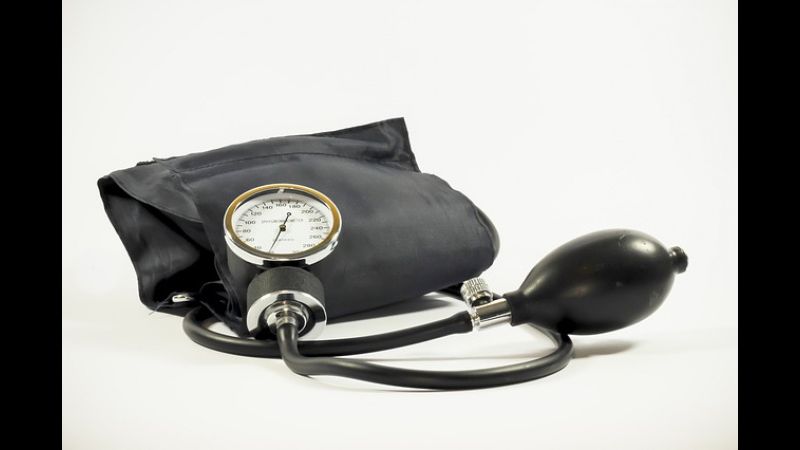A panel of physicians recently lowered the threshold for high blood pressure, often a precursor to cardiovascular disease, which is now the leading cause of death for both men and women here in the United States. Under these new guidelines, an additional 30 million Americans are now living with high blood pressure, bringing the total adult population living with the condition to nearly 50 percent.
Heart health is an integral part of healthy aging, which makes these new guidelines very troubling for many people. There are a lot of factors that can lead to high blood pressure levels, including obesity, stress, and genetics, but there are also ways to help manage high blood pressure as well. The first step is knowing your numbers--could you be at risk?
Identifying High Blood Pressure Levels
There are two numbers to consider when it comes to blood pressure: systolic (the top number) and diastolic (the bottom number). An ideal blood pressure reading would be 120/80, but old guidelines dating back to 1993, gave people some leeway with the systolic number by allowing the threshold to go as high as 140.
The new guidelines layout the dangers of high blood pressure by creating the following categories:
- Normal: 120/80
- Elevated: Between 120-129/Less Than 80
- Stage 1: Between 130-139/Between 80-89
- Stage 2: 140/90 (or higher)
Studies have shown that heart health is greater when you can get your systolic blood pressure down to 120, keeping your risk of developing heart disease at bay. Unfortunately, under these new guidelines the number of Americans living with hypertension jumps from 32 percent up to a whopping 46 percent. This puts nearly half of the adult population at risk for developing cardiovascular issues, such as heart attacks, strokes, and coronary heart disease.
High Blood Pressure Risk Factors
The Centers for Disease Control have identified a series of risk factors that contribute to high blood pressure levels, many of which can be controlled by decisions you make in your daily life:
- Diabetes. If you have been diagnosed with diabetes, you are at greater risk for developing high blood pressure. Roughly 25 percent of people with Type 1 diabetes and 80 percent of people with Type 2 diabetes are living with high blood pressure.
- Unhealthy Diet. A sodium-saturated diet can be a major contributor to high blood pressure levels. Sodium is often found in pre-packaged foods, especially soups and frozen meals, so be sure to double check your nutrition labels. A diet low in potassium can also lead to high blood pressure,
- Lack of Physical Activity. When it comes to overall healthy aging, the more active you are, the better. Lethargy and inactivity are big contributors to high blood pressure, so if you are more of a couch potato than a gym rat, you might be at greater risk.
- Alcohol and Tobacco Use. Both alcohol and tobacco have been shown to raise your blood pressure, so it is recommended that women do not indulge in more than 1 drink per day and for men, 2 drinks per day. It’s also recommended to quit smoking if you haven’t already, as cigarettes can damage both the heart and your blood vessels, along with additional negative long-term effects on healthy aging.
- Family History. Unfortunately being genetically predisposed to hypertension and cardiovascular disease cannot be avoided. You can, however, be aware of the family history and create a plan with your doctor to help you better manage your heart health.
Boost Your Heart Health
So what can you do if your blood pressure is too high the next time you visit your doctor? There are plenty of adjustments you can make to help lower your blood pressure without having to take prescription medication.
- Lose Weight. Obesity is a big contributor to high blood pressure, so losing weight can help improve your heart health. Instead of looking for quick fixes, you should commit to making small changes to your diet and pair that with an increase in physical activity. There’s a reason that so many professionals stress the importance of diet and exercise when it comes to healthy aging--it works!
- De-Stress. Stress can be a big contributor to high blood pressure, especially since it forces your body to release hormones that constrict your blood vessels and get your heart pumping faster. Exercises that reduce stress, such as yoga and tai chi, have been scientifically proven to benefit both your mind and body.
- Have A Backup Plan. Even if you make a commitment to changing your lifestyle in order to avoid a hypertension diagnosis, lowering your blood pressure to healthy levels won’t happen over night. Be patient with the process, but also be careful. A medical alert device is the ideal way to remain connected to help should you need it. You can also invest in a blood pressure cuff to keep at home, so that you can continue to monitor your progress in between visits to the doctor.
Of course, any major changes should be approved by your physician beforehand to ensure your safety throughout the process.

